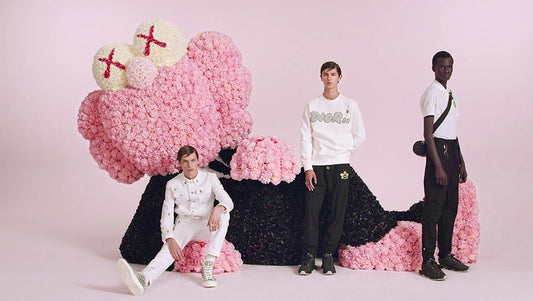When we think of romance in art, we often associate it with Gustav Klimt’s The Kiss. This painting is known to be one of the most romantic paintings of all time. However, this beautiful artwork was initially considered to be inappropriate for its sexual themes.
Prior to The Kiss, Klimt was already a successful mural artist and would paint allegorical paintings for public buildings in Vienna that were fitting to the “conservative mythological images” of the 19th century. However, after the death of his brother and father, Klimt decided to change his artistic style. His artworks became, as described, “more overtly sexual, and for some, more disturbing.” One instance was a commissioned artwork by the University of Vienna. The university rejected Klimt’s artwork due to its sexually provocative themes.
After being rejected, Klimt formed The Vienna Secession, a radical group of young artists who wanted to break away from the traditional historical paintings and more towards the contemporary arts. This turn of events led to Klimt’s The Kiss, which became one of his most famous artworks.

The painting was created between 1907 and 1908 using oil paint, as well as gold and platinum leaves. Klimt was inspired by Byzantine artworks when he went to see the mosaic of San Vitale in Ravenna. This influence can be seen in The Kiss with his usage of gold, as well as his incorporation of gesso to add texture to his artworks. Gesso is a mixture of animal glue and chalk dust that creates a thick consistency, which he would use to paint patterns on his artworks. He would later apply either gold or platinum leaves over the gesso pattern and would scrape off the excess using a brush.
Klimt also covered the background with Klimt’s new technical invention. The golden background of the painting was covered in gold leaves that were painted over by a dark wash. Afterward, he flicked off golden flakes on top to add a three-dimensional look, as if the lovers exist outside of the painting and that the golden background is simply behind them. The painting measures approximately 6ft x 6ft, showcasing two life-size figures in a romantic embrace.
When viewing the painting, the two figures are evidently sharing an intimate moment, like a photograph, frozen in time. However, it is quite ironic that Klimt created a painting of two lovers in a passionate embrace because it could be suggested that Klimt was never romantically involved with anyone due to his intimacy issues, despite fathering 14 children from different women.
Similarly to the artwork done at the University of Vienna, when Klimt initially presented The Kiss, it was viewed as inappropriate and provocative. Besides being in a passionate public display of affection, Klimt further implied that the couple was indeed naked under their golden, patterned garments, which led to public outcry about the painting being way too erotic. It is also important to note that during this time period, the appropriate style of clothing required people to be fully clothed and show no skin, except the face, and maybe the hands. Therefore, it was initially shocking for the people at that time to witness the woman in the painting showing off parts of her skin while being in a sexual position.
And, speaking of clothing, the clothes on both figures are a “visual metaphor for the emotional and physical expression of erotic love.” The patterns found on the male garment were rectangles in an upright position, which symbolizes his “erect” and “thrusting masculinity.” While the female garment is covered in concentric circles, which is said to symbolize the woman’s reproductive organ.
Adding to Klimt’s metaphorical meanings found in his artworks, it is also assumed that the painting was inspired by Ovid’s Metamorphoses which tells a story between Apollo and Daphne. The story goes that Apollo chased Daphne after she rejected his advances and prayed to the gods to turn herself into a laurel tree. Towards the end of the story, there was a mention of a specific kiss that somewhat shares a similarity to the painting. The quote goes,
“He clasped the branches as if they were parts of human arms, and kissed the wood. But even the wood shrank from his kisses.”

When looking closely at the painting, it seems as if the female figure is shrinking to the ground, while the golden vines are wrapping around her legs, slowly making her part of the meadow, similar to Daphne as she turned into a laurel tree. If this is what inspired Klimt to paint this piece, then perhaps the woman was not in a passionate embrace, but rather turning her head to avoid the pursuit of the man’s kiss. Although The Kiss is widely accepted as romantic, the parallels with Ovid’s Metamorphoses call the romantic aspect of the painting into question. I believe it is up for interpretation, as Klimt once said,
“Whoever wants to know me… they should look attentively at my pictures and there seek to recognize what I am and what I want.”
Gustav Klimt’s famous artwork The Kiss can be seen at the Austrian Gallery Belvedere, where art lovers from all over the world can witness Klimt’s masterful craftsmanship.
©ArtRKL™️ LLC 2021-2023. All rights reserved. This material may not be published, broadcast, rewritten or redistributed. ArtRKL™️ and its underscore design indicate trademarks of ArtRKL™️ LLC and its subsidiaries.





